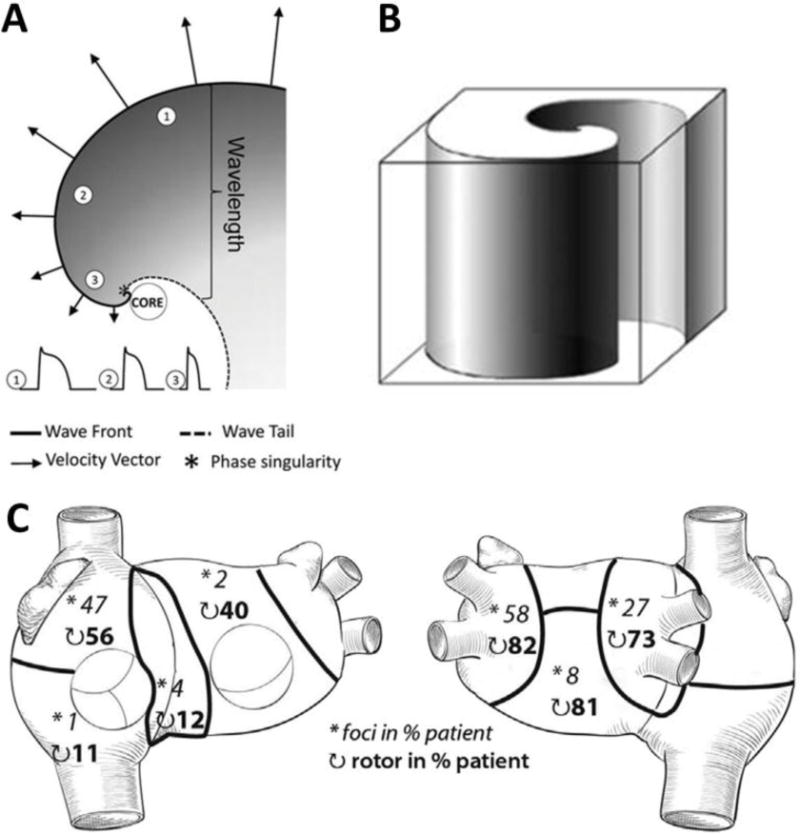Figure 1.

A. Wavefront (solid line) and wavetail (dashed line) near a rotor core. Wavefront velocity (arrows) decreases when proximity to the core increases. The wave is blocked at the tip of the rotor as a result of the high curvature of the wavefront which creates a great imbalance between the depolarizing charge of the wave and the surrounding unexcited tissue (sink-to-source mismatch). Thus, the wave pivots around a singularity point in the excitable but unexcited core of the rotor. Wavelength is defined as the distance between the depolarizing front and the repolarizing tail. B. Schematic representation of a three-dimensional scroll wave. Its epicardial and endocardial manifestation would be a two-dimensional rotor as the one depicted in A. C. Spatial distribution of drivers (asterisks: focal breakthroughs, curved arrows: reentry events) reported as the percentage of patients who presented such drivers in persistent AF (A and B reproduced from Pandit & Jalife,30 C reproduced from Haïssaguerre et al.6)
